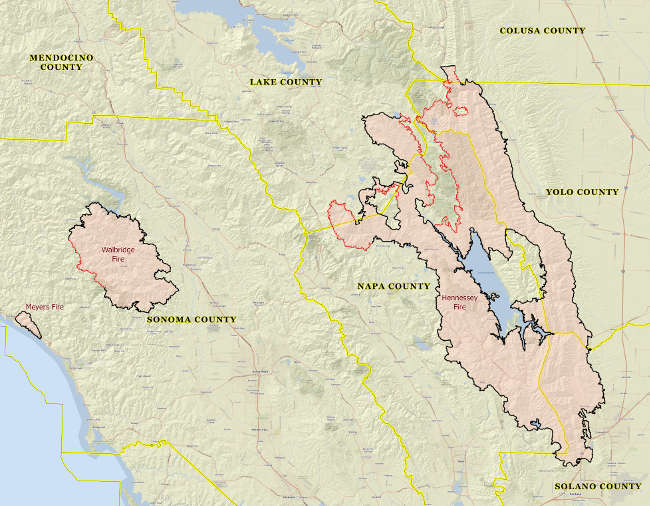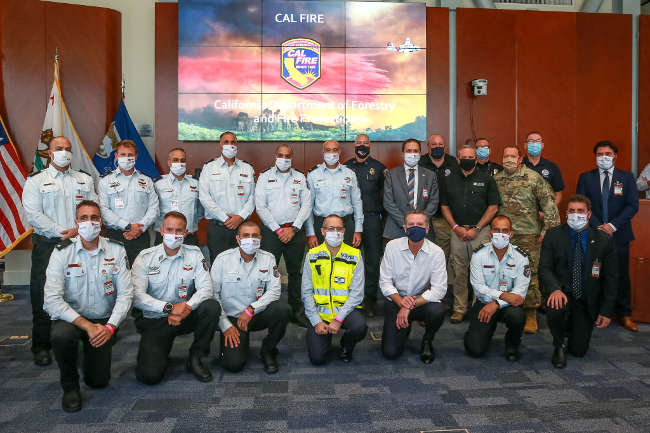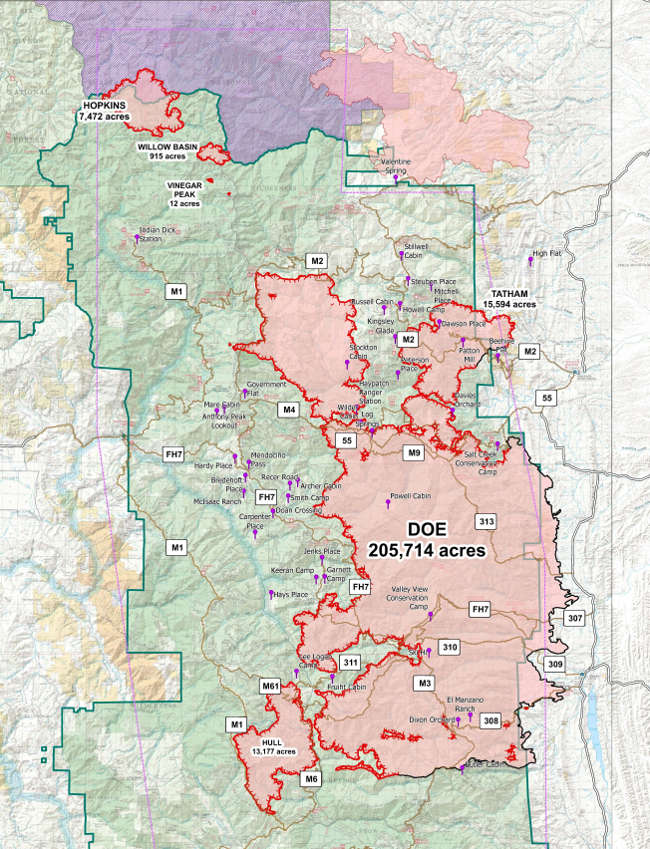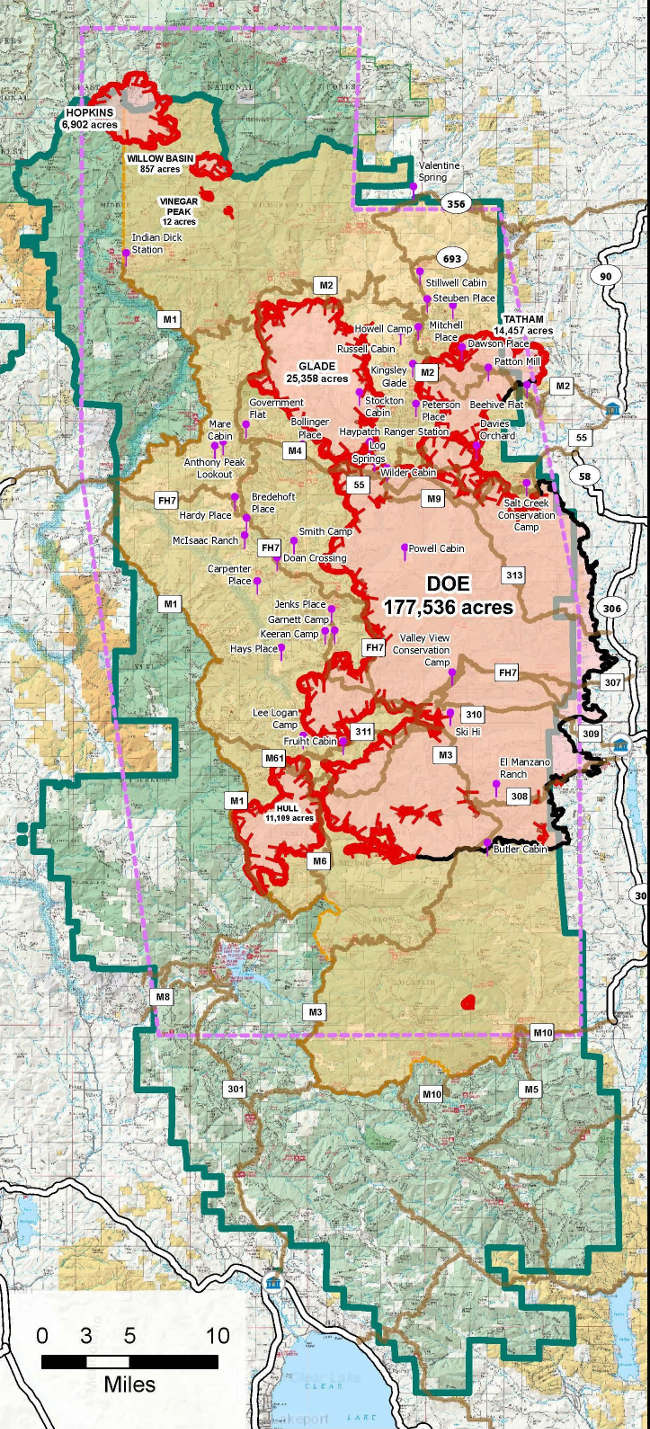- Elizabeth Larson
Firefighters strengthen containment lines on LNU Lightning Complex

LAKE COUNTY, Calif. – Firefighters spent Tuesday continuing to strengthen containment lines and hold the LNU Lightning Complex to no new acreage.
Cal Fire said the 375,209-acre complex, burning for more than two weeks, rose to 74-percent containment on Tuesday evening. Its acreage has remained unchanged since Monday.
Within the complex, the 317,909-acre Hennessey fire, which has burned across five counties – Colusa, Lake, Napa, Solano and Yolo – is up to 70 percent containment, according to Cal Fire’s Tuesday night report.
On the Sonoma County side of the complex, the 54,940-acre Walbridge fire west of Healdsburg is up to 70 percent containment, while on Tuesday firefighters fully contained the Meyers fire north of Jenner at 2,360 acres, Cal Fire reported.
Total personnel assigned on Tuesday night included 2,539 personnel, 237 engines, 55 water tenders, 19 helicopters, 46 hand crews and 58 dozers.
Cal Fire said crews on Tuesday worked to bolster containment lines and mop up the fire perimeter.
Firefighters were to continue active patrol overnight, taking advantage of cooler night-time temperatures to build additional containment lines. Cal Fire said dry conditions and hotter weather will continue throughout the week.
Fire suppression repair teams remain active throughout the area repairing damage caused by fire suppression activities, Cal Fire said.
Officials said the number of threatened structures on Tuesday was reduced to 3,375.
Continuing damage assessments led to Cal Fire updating the number of destroyed structures to 1,449 and the structures damaged to 227. Lake County’s total – nine structures destroyed – remained unchanged.
Improving conditions led to more repopulations of communities across the complex on Tuesday.
In Lake County, some evacuation orders on Tuesday were reduced to warnings and some warnings lifted in the south county.
Those remaining in effect as of Tuesday night included the following:
– Evacuation order: East of Middletown area, including east of Highway 29 and north of the Lake-Napa County line up to the intersection of Highway 29 and West Road, and south of Butts Canyon Road at Callayomi Road.
Evacuation warnings are as follows:
– North of Lower Lake area: Including north of Morgan Valley Road, east of the intersection of Morgan Valley Road and Sky High Ridge Road, south of Highway 20, west of the Lake/Colusa/Yolo County lines.
– South of the Lower Lake area: South of Morgan Valley Road, east of Chimney Rock/Canyon Road, north of Jerusalem Grade Road Extending to Lake/Napa County line, west of the Lake/Napa County line.
– Middletown area: East of Guenoc Winery Road, north of Butts Canyon Road, south of Grange Road, west of Lake/Napa County line.
– Middletown area: South of Butts Canyon Road to Cailayomi Road, east of St. Helena Creek Road, north of Highway 29, west of Cailayomi Road extending to Western Mine Road.
Email Elizabeth Larson at

 How to resolve AdBlock issue?
How to resolve AdBlock issue? 









